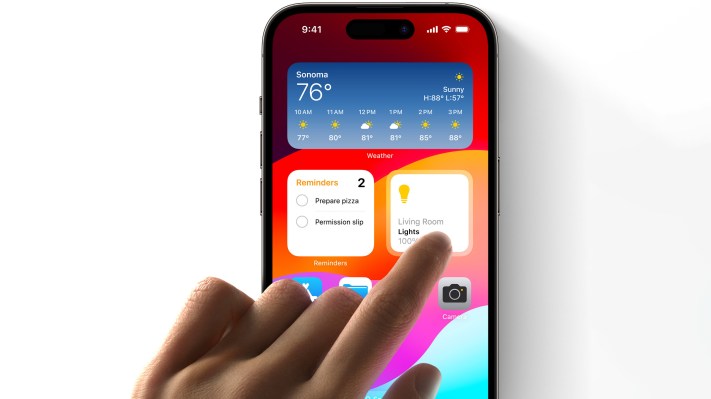Apple is giving its widgets platform an upgrade with its latest software releases. In addition to now becoming available on Apple Watch and Mac, widgets on iPhone and iPad will also become interactive in iOS 17 and iPadOS 17, the company said. The announcement flew a bit under the radar during yesterday’s keynote address, given the bigger consumer-facing changes coming to the new OS — like a brand-new Journal app, FaceTime voicemail, a significant update to the Messages app, StandBy mode and more, not to mention the Vision Pro headset. However, the company shared more details about how new widgets will work during its Platforms State of the Union address with developers.
With interactive widgets, developers will be able to build widgets that let you perform a simple task with a tap — like checking off an item on your to-do list, for example.
During Apple’s keynote at its Worldwide Developers Conference on Monday, the company focused on the widgets’ interactive capabilities as part of the coming iPadOS 17 updates, leaving some to wonder if iPhone would gain access to similar functionality.
Apple cleared this up during its State of the Union keynote, where it previewed WidgetKit changes and other features for developers, including “interactive widgets on iOS and iPadOS,” which it said would give developers new ways to surface their apps across the system. It’s also teasing the iOS 17 interactive widgets on its retail website.
On iPad, the new interactive widgets can be placed on the Home Screen, while its new Lock Screen widgets can sit off to the side of the iPad’s Lock Screen, instead of at the top as on iPhone.
The company demoed a few third-party apps with interactive widgets, including Quizlet’s flashcards and Streaks’ progress tracking app, in addition to its own, like Apple Music, Home and Reminders.
On the back end, Apple explained to developers these new widgets will rely on SwiftUI-based architecture. The widget’s code is run asynchronously to generate content, and the SwiftUI views it builds are saved to an archive. When a widget needs to be drawn, the archive is loaded, rendered in the background, then displayed to the user as part of the system’s user interface. And when it’s tapped, the extension is run again to update the interface. This architecture is also what allows the iPhone widgets to run on Mac, Apple told developers.
To update their widgets for interactivity, developers will leverage SwiftUI features, like buttons and toggles as well as App Intents — a system that exposes an app’s capabilities to the system, previously for the use of surfacing specific app actions in the Shortcuts app or for spoken commands to Siri. For example, an App Intent could be used to start a meditation in your mindfulness app, open a social app to the home feed or start a search in a shopping app, among other things.
This same functionality is surfaced elsewhere in the system, including Siri, Shortcuts and, now, Spotlight search — the latter is also a new feature with iOS 17 and iPadOS 17, which will display common actions when an App Intent is wrapped in Shortcut. This will surface common actions when users search for an app on their devices. For instance, if they look for the “Photos” app by name, they’ll find suggestions like “Favorites” and “Recents” in Spotlight’s results that will take them directly to those folders.
For interactive widgets, the developer just has to associate one of their existing App Intents with a button on their widget, Apple says. By tapping on the widget, the user will be able to interact with the developer’s app, without actually launching the app.
These capabilities may have developers more excited to adopt widgets than in the past, as it’s essentially like being able to build a small version of their app that can live on the Home Screen, where they could have a closer connection to their users. Already, some developers are brainstorming about the new interactivity to do things like offering users a playable keyboard widget or photo albums where you can rotate through the photos.
With Apple’s own apps, interactive widgets could allow you to do things like turn off a light via the Home app, tap a button to play from Apple Music, check off completed reminders and more.

